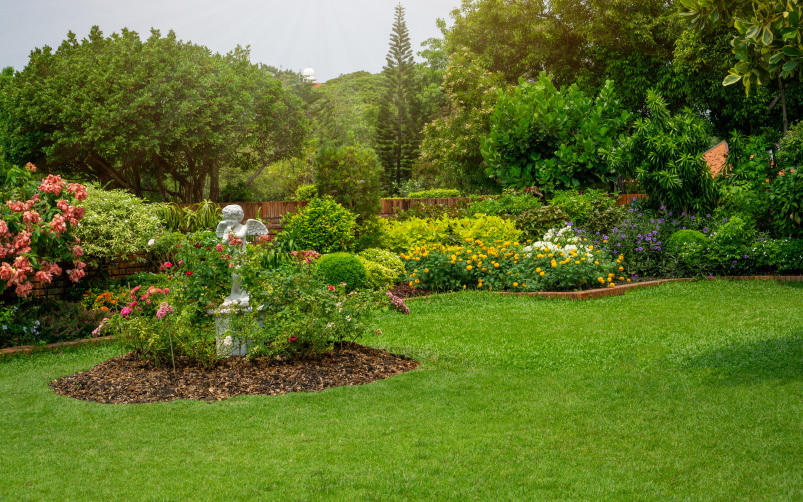How do I plant a lawn in my yard?

If you want to use sod, it’s a matter of preparing the ground, then purchasing the sod and either rolling it out in strips until you have a lawn, or hiring a landscaper to do that for you.
That said, planting a lawn from seed can save you money and be every bit as lush and beautiful when you’re done. With good quality seed, well-prepared soil, a handful of tools and a hefty dose of patience, you can have the lawn you’ve always wanted — and bragging rights to say you did it yourself. Here are the basic steps:
1. Timing is everything: Here in the Pacific Northwest, the best time to seed a lawn is late summer to early fall — typically September and October when the weather is a little cooler and the new grass won’t dry up and burn. You can get everything ready beforehand, but you don’t want to actually plant the seeds until you see “fall” on the calendar.
2. Do the math: How big is your lawn going to be? Calculating the square footage will help you know how much grass seed, compost and lime to buy.
3. A seed for all seasons: There are almost as many types of grass seeds as there are types of yards. When selecting the one that’s right for you, it’s important to choose a grass that’s right for your location and growing conditions. Will the lawn be in full sun, partial sun or mostly shade? Will it get lots of foot traffic, be a favorite spot for pets, or is it more decorative than anything else? What’s the soil like where your lawn will go? Figuring all this out upfront will help ensure a greener, healthier lawn.
And there are plenty of lawn experts in the area who are happy to answer your questions and help with the seed selections. Shooting Star Nursery in Central Point and Greenleaf Industries in Grants Pass, for example, are great resources. Just ask!
4. Dig in and prepare the soil: Once you’ve chosen an area for your soon-to-be lawn, you need to properly prepare the soil. If you have any existing grass, use a pointed shovel to remove it. If the area is too big, consider renting a sod cutter to make the job easier and go faster. When that’s done, walk around the area and pick up any rocks, clumps of dirt or other debris. If there are low spots or potholes, fill them in. If your soil is compacted, use a tiller to work up the soil into small, pea-sized particles. The more thorough the soil prep, the more likely your grass seed will take root and give you a healthy lawn for years to come.
5. Spread the seeds: Following the direction for the feed you selected, use a spreader and get to it, starting with the perimeter. This allows you to fill in the rest of the lawn without leaving any bare spots around the edges. It’s best to overlap slightly with each pass. If you want to use some kind of weed prevention product or lawn food for new grass, make sure you apply them on the same day.
6. Add a cover layer: Once the seeds are down, along with any lawn food you might want, cover both with a thin layer of compost — no more than ¼ of an inch. This cover layer helps the grass seed from drying out and washing away. When you’re done, use a water roller (you can rent them at most garden centers) to compact the area. This helps take in more water and speed the germination time.
7. Water thoroughly: Once the grass seeds are sowed, the lawn must be kept constantly moist. Depending on conditions, watering by hand two or three times a day is fairly common — more often when it’s hot or windy. And it’s important to keep off the lawn for at least 6 to 8 weeks. Remember, you’re going for a gentle spray when watering… you want the seeds to stay where they are and not wash away or end up in puddles of water.
8. Let there be lawn: After roughly two months, you should have a lawn that can be gently mowed. Just remember that the soil will be soft from all that watering, and the grass will be more delicate than a well-established lawn. Get the croquet set ready, you have a lawn!
Share This
